- The Dangers of Online Gaming: A Parent’s Guide to Protecting Teens While Gaming
In this article
Video games have become a staple in modern households, especially as gifts for birthdays and holidays. With new gaming consoles and popular titles frequently topping wish lists, it’s easy to see why parents embrace this as a way to make their kids happy. However, the virtual worlds within these games are not without risks. From online predators and cyberbullies to scammers and the dangers of gaming addiction, parents must stay informed and proactive to ensure their teens’ safety.
Here’s a comprehensive guide to understanding these dangers and implementing effective strategies to protect your teen while allowing them to enjoy the positive aspects of gaming.
The Dangers of Online Gaming
1. Online Predators
Gaming platforms connect players from around the world, but this connectivity also opens doors to predators who exploit the anonymity of online spaces. Predators often use games with open communication features, such as voice chat or direct messaging, to build trust with young players. They may pose as peers, offering gifts or in-game currency as a way to gain access or manipulate their targets. Once trust is established, these individuals might attempt to extract sensitive information or arrange meetings outside of the gaming environment, putting teens at significant risk.
2. Cyberbullying
Gaming is meant to be fun, but competitive environments can sometimes turn toxic. Cyberbullying in online games often manifests through hurtful messages, intentional targeting during gameplay, or public shaming in forums. Teens subjected to this behavior can experience lowered self-esteem, anxiety, or even a loss of interest in gaming altogether. The anonymity of online gaming can exacerbate this issue, making it harder for parents to identify the source of the bullying.
3. Scammers
The gaming world is rife with scams designed to trick players into revealing personal information or spending money. Common tactics include phishing links disguised as free giveaways, fake friend requests aimed at obtaining login credentials, and fraudulent websites offering in-game currency or items at discounted rates. Some scams even use official-looking messages to convince players they need to verify their accounts, leading to the theft of sensitive data.
4. Gaming Addiction and Microtransactions
The immersive nature of video games can lead to addiction, with teens prioritizing gaming over school, social interactions, and even sleep. This behavior often stems from the game’s design, which rewards prolonged play and creates a sense of achievement. Microtransactions—in-game purchases for items, skins, or power-ups—add another layer of concern. These features are often designed to be addictive, encouraging players to spend real money to progress faster or enhance their experience. For teens, this can lead to overspending and financial strain on their families.
Steps Parents Can Take to Protect Their Teens
1. Set Up Parental Controls on Gaming Platforms
Most gaming consoles and platforms offer robust parental control settings to help parents manage their teens’ gaming experience. Here’s how to utilize them effectively:
PlayStation: Limit screen time, restrict access to mature content, and disable in-game purchases without approval.
Xbox: Use the Microsoft Family Safety app to set content filters, enable activity reports, and manage spending limits.
Nintendo Switch: Adjust communication settings, restrict age-inappropriate games, and use time limits.
PC Gaming Platforms: Platforms like Steam allow parents to set up Family View, which restricts access to certain games and features. These settings also help prevent unauthorized purchases and limit exposure to inappropriate content.
2. Monitor Gaming Habits
Keep an eye on how much time your teen spends gaming and the types of interactions they engage in. Signs of unhealthy gaming behavior include skipping meals, neglecting schoolwork, or becoming irritable when not playing. Regularly check the games they’re playing, and discuss any concerns about who they’re communicating with online. Open dialogue fosters trust and allows you to address potential issues before they escalate.
3. Leverage In-Game Safety Features
Many games come equipped with tools to enhance player safety. For example:
- In Call of Duty, you can mute entire online lobbies to prevent voice chat interactions with strangers.
- In Fortnite, parents can disable direct messaging and restrict chat to approved friends only.
- Games like Roblox offer parental controls to limit communication and set age-appropriate experiences.
By exploring these settings, parents can significantly reduce risks associated with inappropriate interactions and protect their teens from harmful influences.
4. Teach Teens About Online Safety
Education is a powerful tool. Teach your teens to:
- Avoid sharing personal information, such as their real name, address, or school, in online games.
- Be cautious about accepting friend requests from strangers.
- Report and block players who engage in inappropriate behavior.
Encourage them to think critically about the people they interact with and to come to you if they encounter anything suspicious or uncomfortable.
Addressing the Issue of Microtransactions
Microtransactions are small in-game purchases that can quickly add up, leading to significant financial consequences. These features often use psychological tactics to encourage spending, such as offering limited-time deals or creating a sense of urgency. For teens, this can foster unhealthy spending habits and create tension within the family.
Steps to Prevent Overspending:
- Disable Purchases Without Parental Approval: Most consoles allow you to password-protect purchases or require a parent’s approval for transactions.
- Discuss Digital Spending: Have an open conversation with your teen about the value of money and the risks of impulsive spending.
- Monitor Payment Methods: Avoid linking credit cards directly to gaming accounts. Instead, use prepaid cards or set spending limits. Regularly review account statements to identify unauthorized purchases and address them promptly.
Balancing Safety and Fun
While it’s important to address the risks, gaming also offers significant benefits. Video games can help teens develop problem-solving skills, build friendships, and decompress after a long day. Striking the right balance between safety and enjoyment is key.
Encourage your teen to explore games that promote creativity, teamwork, and critical thinking. Join them in their gaming sessions when possible to bond and better understand their interests. Take an active interest in their favorite games and celebrate their achievements to foster a positive gaming experience.
Taking Control of Your Teen’s Gaming Experience
Video games can be a fantastic way for teens to connect with friends, relieve stress, and have fun. However, the risks of online predators, cyberbullying, scammers, and gaming addiction cannot be ignored. By setting up parental controls, monitoring gaming habits, and teaching teens about online safety, parents can significantly reduce these dangers.
With the right tools and proactive measures, you can ensure your teen enjoys the benefits of gaming while staying protected from its potential pitfalls. Empowering yourself with knowledge and maintaining open communication with your teen creates a safe environment where gaming becomes an enriching and positive part of their lives. Together, you can strike the perfect balance between safety and enjoyment, making gaming a secure and rewarding experience for the entire family.
You’re Not Alone! iDefend Can Help
Navigating the complexities of online safety, parental controls, and digital addiction can feel overwhelming, especially with the ever-changing digital landscape. iDefend provides parents with the tools and support they need to protect their families from cyber risks, including cyberbullying, online predators, and excessive screen time. With iDefend, creating a safer online environment and fostering healthy digital habits becomes simpler and more achievable.
Our dedicated team of professional advisors works with you to develop a customized protection plan tailored to your family’s unique needs. From setting up advanced parental controls to offering practical tips and monitoring solutions, iDefend empowers you to take control of your family’s online safety. Our expertise ensures you have the right guidance and resources at every step—so you can focus on what matters most.
Take the first step toward a safer digital future for your family. With iDefend’s risk-free trial and exclusive savings of 30%, there’s never been a better time to make online safety a priority.



